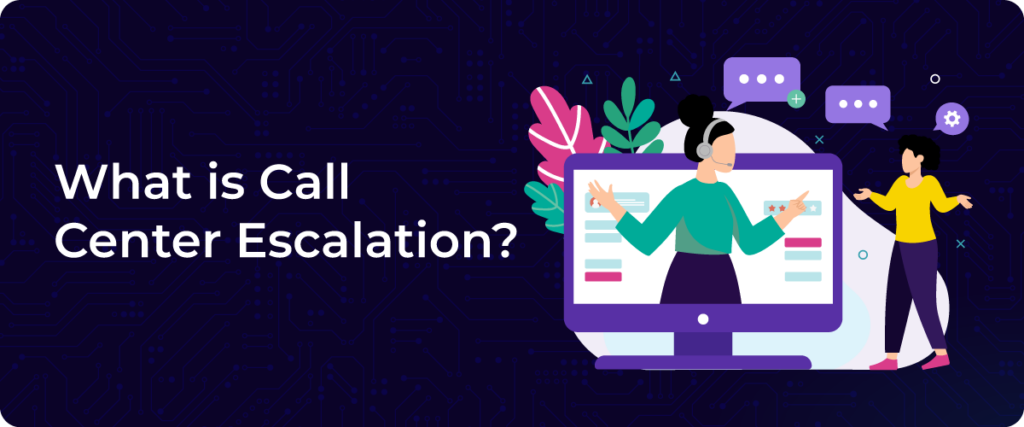Imagine calling customer support and getting your issue fixed before you even ask. Sounds unreal?
Studies show 86% of buyers are willing to pay more for a great experience (PwC). That’s where proactive customer service changes the game—solving problems before they even happen.
In this guide, we shall use the following agenda
- What is Proactive Customer Service?
- Proactive vs Reactive Customer Service
- Importance of Being Proactive in Customer Service
- How to Be Proactive in Customer Service
- Examples of Proactive Customer Service
- 5 Proactive Customer Service Strategies
- Conclusion
- FAQs
What is Proactive Customer Service?
Proactive customer service is like having a support team that reads minds—but in a good way. Instead of waiting for customers to complain, businesses anticipate issues and fix them before they escalate. Think of Netflix reminding you about an expiring subscription or Amazon notifying you of a delayed package.
It’s the opposite of reactive service, where businesses only act when a problem arises. Studies show that 68% of customers feel more positive about brands that offer proactive support (HubSpot).
Proactive customer service builds trust, boosts loyalty, and reduces frustration. It’s all about small, thoughtful actions—like a bank warning you about suspicious transactions or an airline updating you about a flight delay before you even check.
When done right, it turns customers into lifelong fans. And in today’s world, where expectations are sky-high, businesses that stay ahead of problems will always win.
Proactive vs Reactive Customer Service
Reactive customer service is like playing defense—you wait for a problem to arise, then fix it. When a customer calls with an issue, support scrambles to help. While this is necessary, it often leads to frustration and long wait times.
Proactive customer service, on the other hand, is playing offense. It anticipates issues and prevents them before they happen. Think of an e-commerce store sending restock alerts instead of waiting for customers to complain about unavailable products.
The difference?
Reactive service solves problems. Proactive service prevents them. And in a world where
96% of customers say good service drives loyalty (Microsoft), being proactive isn’t just nice—it’s necessary
| Aspect | Proactive Customer Service | Reactive Customer Service |
| Approach | Anticipates and prevents issues before they happen | Responds to customer complaints after they occur |
| Customer Experience | Smooth, stress-free, and efficient | It Can be frustrating, and often involves waiting |
| Communication | Initiates contact with helpful updates and solutions | Waits for customers to reach out with problems |
| Examples | Flight delay alerts, fraud detection, subscription reminders | Call center support, complaint resolution |
| Impact on Support Teams | Reduces workload by addressing common issues early | Increases ticket volume and response pressure |
| Customer Loyalty | Builds long-term trust and stronger relationships | This can lead to churn if issues aren’t handled well |
| Business Growth | Enhances brand reputation and drives customer retention | It can hurt reputation if negative experiences pile up |
Importance of Being Proactive in Customer Service
1. Prevents Customer Frustration
Nobody likes waiting on hold to report a problem. Proactive customer service fixes issues before they become trouble, keeping customers satisfied.
Master the art of dealing with difficult customers. [Click here for the free Guide]
2. Builds Customer Trust & Loyalty
When a business takes the first step in solving potential issues, it shows customers that they care. This strengthens trust and keeps them coming back.
3. Reduces Support Volume
Businesses that address common issues early (like sending password reset reminders) prevent a flood of support tickets, making operations smoother.
4. Enhances Brand Reputation
Word-of-mouth is powerful. When customers experience proactive service, they share their positive experiences, boosting brand perception.
5. Improves Customer Retention
Proactive service minimizes negative experiences, reducing churn and increasing lifetime customer value.
6. Gives a Competitive Edge
In a crowded market, businesses that anticipate customer needs stand out. It’s the difference between being remembered or replaced.
7. Increases Sales & Upsell Opportunities
Proactive recommendations based on customer behavior (like personalized offers) lead to higher conversions and better sales.
By shifting from reactive to proactive customer service, businesses create smoother, more enjoyable experiences that keep customers engaged.
How to Be Proactive in Customer Service
1. Anticipate Needs
Study customer behavior and identify recurring issues. For example, if many customers struggle with a specific feature, offer tutorials or guides before they even ask for help.
2. Use Automation
Set up automated alerts for subscription renewals, potential billing issues, or stock updates. This lets you address concerns before they become problems.
ConvoZen.AI can also trigger automation in calls when it identifies a key moment. For example, if a customer mentions refunds an automation could be triggered.
Read more on how automation can improve your ROI here.
3. Monitor Social Media & Reviews
Keep an eye on what customers say on social platforms or review sites. Address negative comments or feedback before they escalate into bigger issues.
4. Offer Self-Service Options
Empower customers with knowledge. Create FAQs, troubleshooting guides, and knowledge bases that customers can access without contacting support.
5. Check in Regularly
Reach out to customers after they’ve made a purchase or used your service. Ask if they need assistance or feedback. It’s a simple way to catch any potential issues early.
6. Train Your Team
Equip your support staff with proactive communication skills. They should know when to reach out to customers with updates or solutions, even before the customer realizes there’s an issue.
7. Personalize the Experience
Proactive service becomes even more effective when tailored to each customer’s preferences or past behavior. Anticipating what they need next shows you’re invested in their experience.
Examples of Proactive Customer Service
1. Bank Fraud Alerts
A bank notifies customers about suspicious activity on their account before they even notice it. This proactive alert prevents potential fraud and reassures the customer that their account is secure.
2. Flight Delay Notifications
Airlines send text or email alerts about flight delays or cancellations before passengers arrive at the airport. By keeping travelers informed ahead of time, they can plan accordingly and avoid unnecessary stress.
3. Software Updates & Bug Fixes
A software company automatically updates its users to the latest version, addressing bugs and improving performance without the customer having to ask. This proactive service keeps the software running smoothly and prevents frustrations from unresolved issues.
To read more inspiring customer service examples click here
5 Proactive Customer Service Strategies
1. Predict Customer Needs with Data
Analyzing past interactions helps businesses anticipate common issues. For example, if customers frequently struggle with setup, sending a step-by-step guide after purchase can prevent frustration.
ConvoZen.AI’s analytics provide actionable insights, helping businesses spot patterns and improve proactive engagement. Through smart insights, you can get a semantic understanding of the feedback provided by customers and find common trends to understand customers more.
2. Leverage Technology for Smart Automation
AI-driven chatbots, conversational IVR, predictive analytics, and automated workflows keep customers informed without waiting for support. Features like proactive email reminders and in-app notifications reduce friction.
While ConvoZen.AI doesn’t automate alerts, it equips teams with dashboards and reports to take preemptive action based on real data.
3. Personalized Customer Outreach
Checking in with customers post-purchase or post-service enhances satisfaction. Sending tailored offers or helpful resources based on their usage history strengthens relationships and improves retention.
4. Empower Customers with Self-Service Options
A well-structured knowledge base, FAQs, and video tutorials let customers resolve issues without contacting support. This improves efficiency and reduces repetitive queries.
5. Monitor Feedback and Act Fast
Tracking metrics such as online reviews, support tickets, and customer sentiments helps address concerns before they escalate. Businesses that actively respond and improve based on feedback gain customer trust.
Monitor and Act on Progress made with ConvoZen.AI
Proactive service isn’t just about fixing issues—it’s about preventing them. Businesses that embrace these strategies build stronger customer relationships and long-term loyalty.
Conclusion
Proactive customer service isn’t just a trend—it’s the future. As businesses harness AI, analytics, and automation, anticipating customer needs will become the norm. Companies that shift from reactive to proactive strategies will see higher retention, stronger loyalty, and fewer complaints.
Tools like ConvoZen.AI provide insights that help businesses stay ahead, ensuring smoother customer interactions. In a world where customers expect instant solutions, being proactive isn’t optional—it’s the key to long-term success.
To see ConvoZen.AI in Action Click here!
Frequently Asked Questions
1. Which best describes proactive service?
Proactive service is when businesses anticipate customer needs and address potential issues before they arise. Instead of waiting for customers to report problems, proactive service involves reaching out first with solutions, updates, or helpful resources.
2. What serves customers proactively?
Businesses serve customers proactively by using AI-driven analytics, personalized communication, self-service options, and automated alerts. Tools like ConvoZen.AI help companies analyze data, identify patterns, and take preemptive actions to improve customer experience.
3. What is an example of proactive customer service?
An airline sending real-time flight delay updates before passengers arrive at the airport is an example of proactive customer service. This keeps travelers informed and reduces frustration.
4. How does proactive customer service benefit businesses?
It reduces complaints, increases customer satisfaction, and improves brand loyalty. Businesses that anticipate issues can resolve them before they escalate, leading to better retention and fewer support tickets.


